SCU helps date oldest narrative rock art in the world.
Lara Leahy
04 July 2024, 11:03 PM
 This artwork was dated at Southern Cross University in Lismore
This artwork was dated at Southern Cross University in LismoreSouthern Cross Universities, Proffesser Renaud Joannes-Boyau and other scientists have coordinated efforts to document and date what is thought to be the oldest known evidence of storytelling - a cave painting found on the Indonesian Island of Sulawesi.
Southern Cross University (SCU) along with Griffith University (GU) and the Indonesian National Research and Innovation Agency (BRIN) have been studying the Leang Karampuang rock art for three years, and are now able to publish their findings.
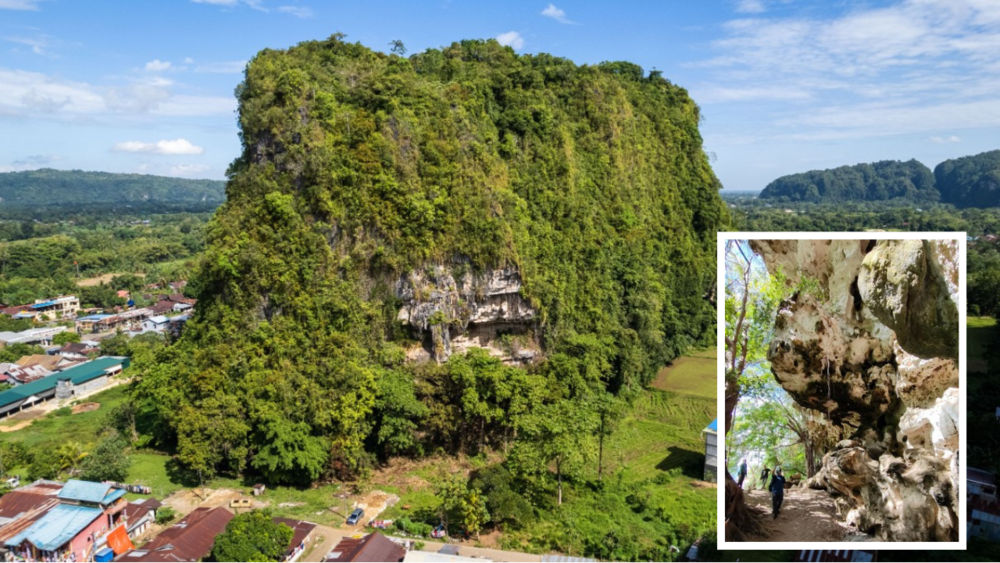
(Karampuang Hill and entrance to the cave)
Professor (Prof.) Renaud, explained what has been uncovered, “We dated the rock art found within Indonesia, and it turns out to be the oldest narrative rock art in the world at 51,200 years old.
“It's a scene. So, you have three human-like figures interacting with a wild animal, and in this case a very large pig. When I say human-like figures, it’s because they are anthropomorphic, so there is mixing of animals and humans in the field, which is very common.”
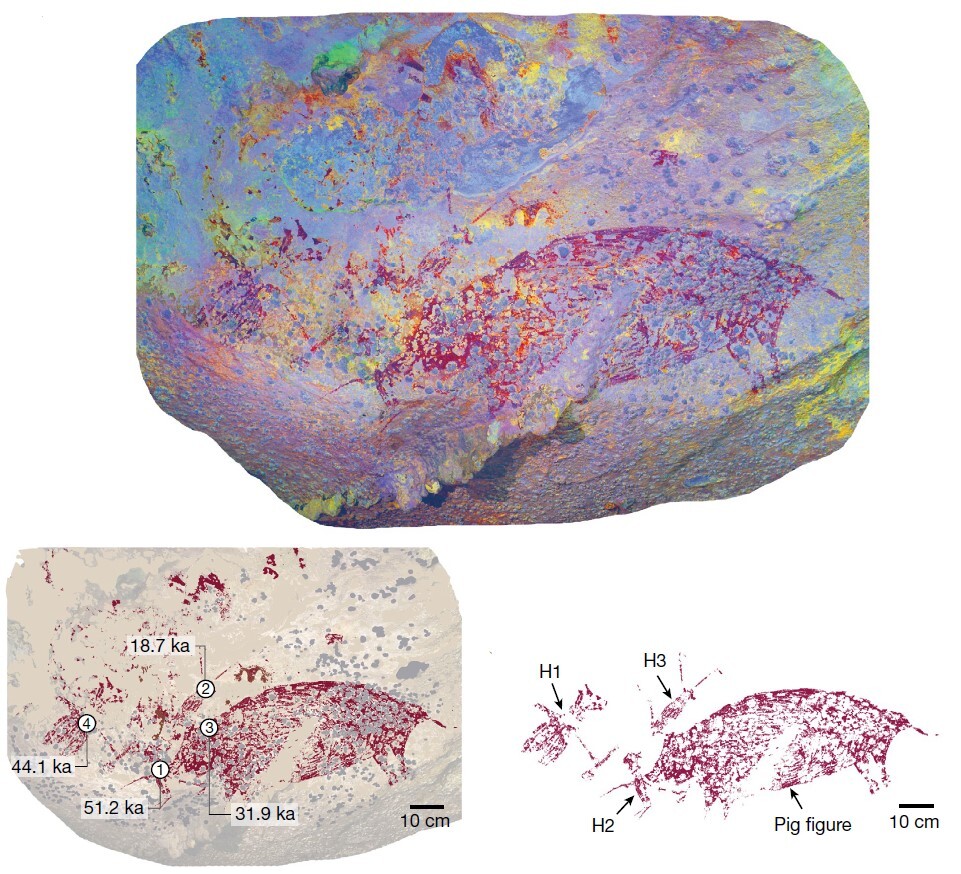
(Enhanced images)
The rock art was discovered in 2017, and scientists have been working on dating it at SCU for three years. A small chip was removed as a sample, and it was dated with a very precise laser.
“As you can imagine, the paintings are 51,000 years old, so they're a bit degraded, but because of the carbonate layers that form on top of it, it is kind of preserved. So even if it's grey in places, we can still make out, very easily, the painting and the scene.

(Credit: BRIN Google Arts & Culture. “Beyond the carbonate, there's still the painting of those early humans.”)
“For whatever reason, they painted these records in difficult to access places. You basically have to lay on your back to look at it. And this is not uncommon. The ones in Europe are the same. They're very deep inside the cave so they had to work really hard to get to it. And that is something we don't really fully understand still today.
“The caves are hard to access, so they were not doing daily activities - they're not sharing meals there. It's more a place for a reason that we don't understand - perhaps it's a spiritual place. So they probably go there for the painting. They might have some rituals, but they don't leave any traces of occupation. It's not a living area.”
Dating rock is very different to dating carbon. Innovating new techniques at SCU made this discovery possible.
“One of the complexities for dating rock art is there is no organic material. So everything is mineral, which limits a lot of what kind of dating you can do. We came up with this new approach, which is using a very precise laser and we map the surface of the carbonate that forms on top of the painting.
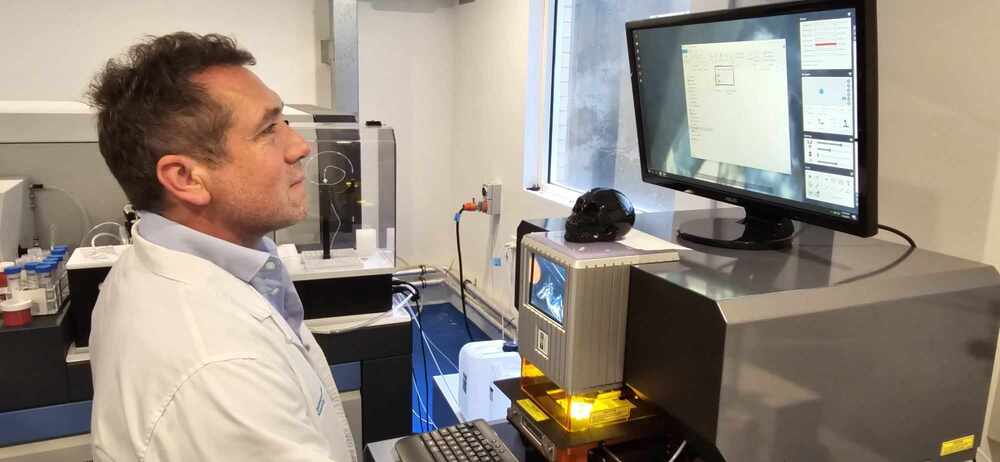
(Prof. Renauld working in the lab.)
“We can extract uranium in it, which is a radioactive element that decays naturally. By measuring these, we can extrapolate the clock from the formation of those layers just on top of the painting, and we can get the age of it.”
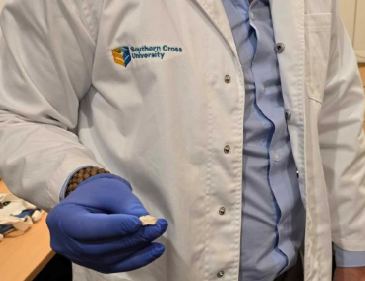
(A small piece of the rock art is used for testing)
Finding and dating these ancient artworks is a piece of the larger puzzle of understanding people's lives and mapping where they lived and when.
“One question that is very important, is we have rock art at the minimum age of 51,000 years ago. And, we have the first Aboriginal Australian arriving around 60 to 65,000 years. So could it be the same people on the way to Australia?
“We know that they went through Asia, and we talk about the northern route or the southern route, but it's those different islands that they took to actually get to Australia. So, are they the same people?
“And if so, we should be able to find all the records closer to the age of those 60,000 years when Aboriginal people first arrived in Australia. So the next step is probably looking for those records and then dating more and more of them until we maybe find one that is older and closer to that age.”
Defining life from rock art over vast periods of time, with different people, environments and creative styles, makes it difficult to determine an accurate timeline.
“What is sure is that they are depicting a scene, they are telling a story. And the story is complex to us. We don't get the significance of it, but to them, it showed some activities that they were doing.
“In this particular case, hunting, but also a test of a certain spirituality of those individuals, their social structure, and also an interrogation of the world around them.”

(Griffith and BRIN team members. From L to R Budianto Hakim, Maxime Aubert, Adam Brumm, Adhi Agus Oktaviana. Credit Ratno Sardi)
The next oldest narrative work was found in the same region as this one, but is only 40,000 years old. It was published in 2014. The oldest examples in Europe are around 35,000 years old.
“We have other artwork that is very controversial, maybe older, but it's not a narrative scene, they're more kind of scratches similar to geometrical scenes. It's hard to identify if it's human-made or it could be animal scratches.”
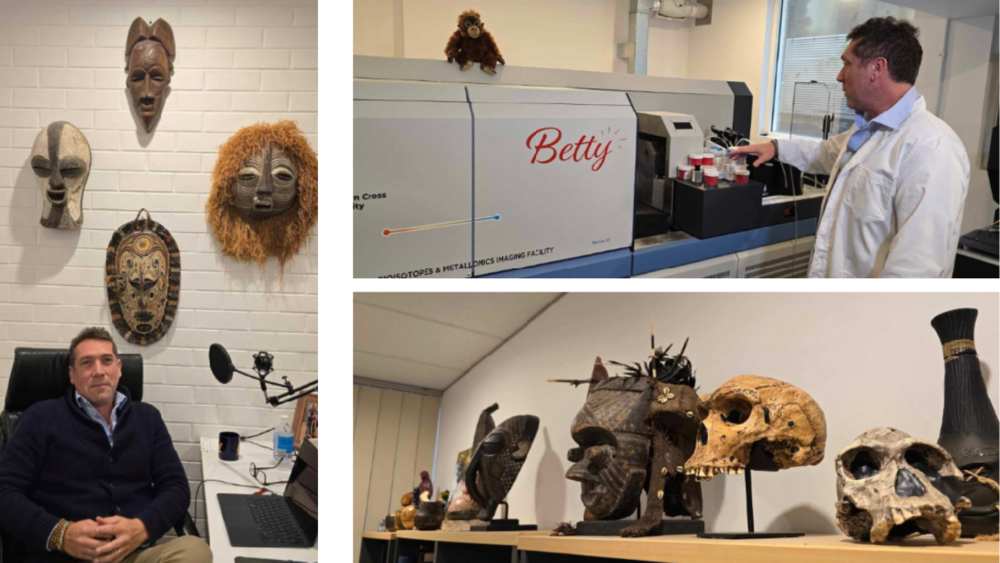
(Prof Renauld)
This breakthrough is the 15th worked on by Prof Renaud. Works are currently underway for future discoveries.

